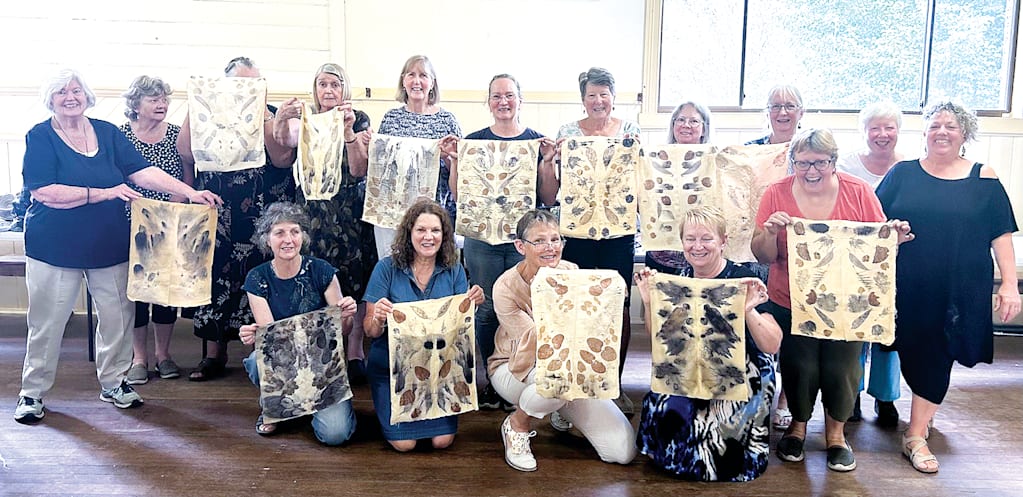THE South Gippsland Spinners and Fibre Arts Group held a very successful and well attended eco dyeing workshop in the Jumbunna Village Hall on Tuesday, March 19.
The tutor, Glenda Beresford, member of the group, kindly supplied all the materials required for each participant.
Eco-dyeing is a natural dyeing process that uses plant materials to create colors on textile. The fabric to be dyed is usually pre-treated to remove any finishes or oils that might hinder the dye absorption.
This can involve washing the fabric thoroughly.
Eco-dyeing relies on natural materials such as leaves, flowers, roots, and barks. These are often collected locally and sustainably to ensure minimal impact on the environment.
Mordants are substances used to help fix the dye to the fabric, improving colourfastness and intensity. Common mordants include alum, iron, and copper. The fabric may be soaked in a mordant solution before dyeing, or the mordant can be included in the dye bath.
The plant materials are usually soaked or boiled to extract their color. This creates a dye bath, which can be adjusted for different colors by varying the plant material used, the concentration, and the pH of the water.
The fabric is then immersed in the dye bath. The length of time it stays in the bath, the temperature, and agitation can all affect the final color and pattern. Some artists also use techniques like bundling or wrapping the fabric with plant materials to create specific patterns.
In some cases, heat is applied to help set the dye. This can involve steaming or boiling the fabric. Once the desired color is achieved, the fabric is rinsed thoroughly to remove excess dye. It’s then washed with a mild detergent to remove any remaining traces of dye and mordant.
The dyed fabric is finally dried, either naturally or with low heat, depending on the fabric type.
Eco-dyeing is valued not only for its environmentally friendly approach but also for the unique and often unpredictable results it can produce, as natural dyes can vary based on factors like plant species, season, and location.
The South Gippsland Spinners and Fibre Arts Group are based on Korumburra. Visit timeonyourhandscrafters.com










